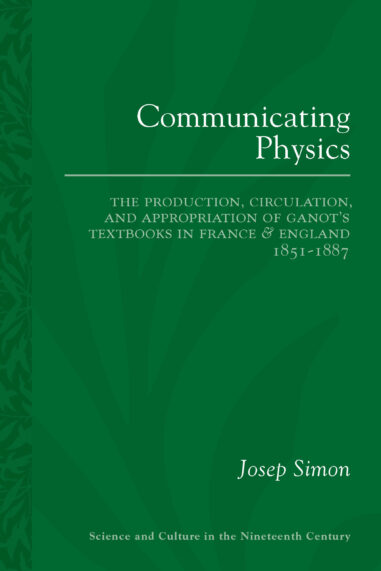

Paperback $50.00
Request Exam or Desk Copy. Request Review Copy
Communicating Physics
The Production, Circulation, and Appropriation of Ganot's Textbooks in France and England, 1851–1887
Combining history of science, history of education, and book history, the author provides fresh perspectives on nineteenth-century physics by means of an original narrative based on a fine-grained study of the production, circulation and appropriation of Ganot's famous textbook on physics.

